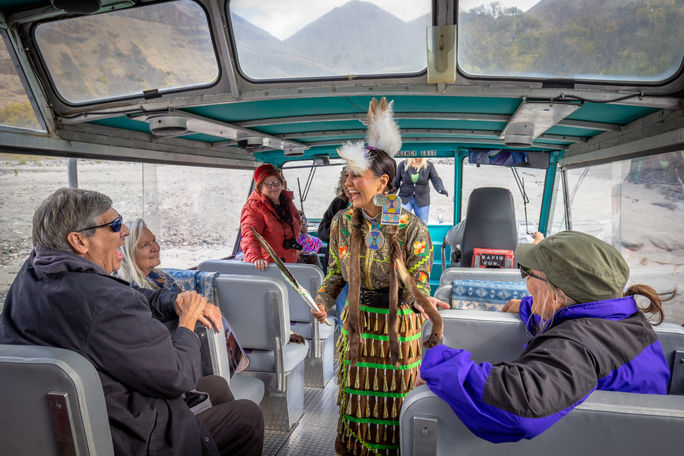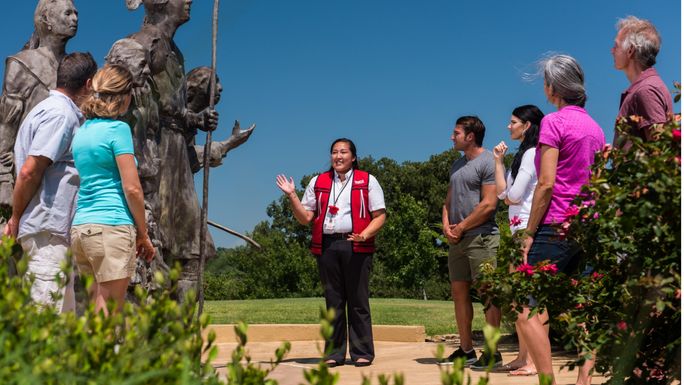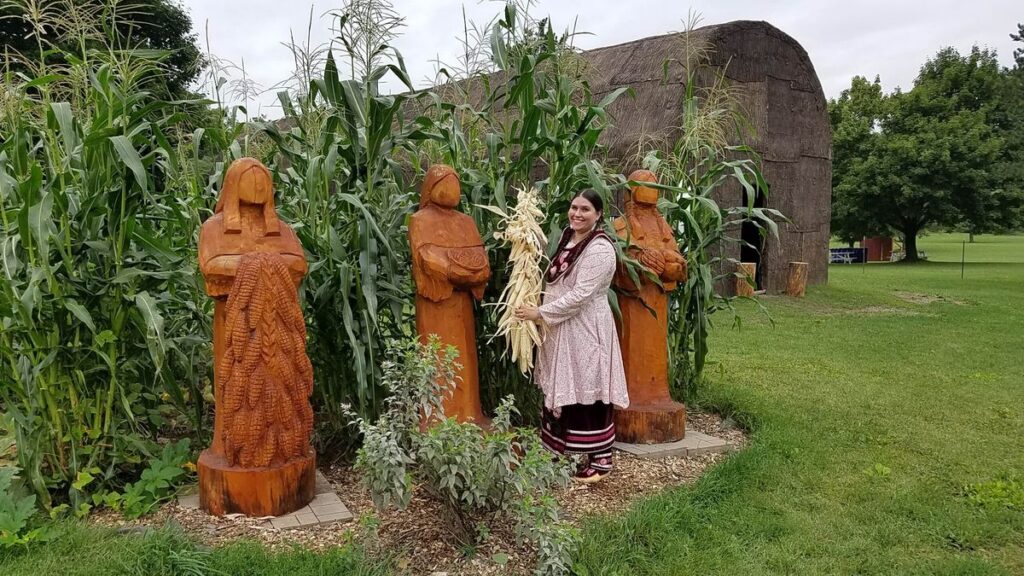
Indigenous tourism looks different across the world, from experiencing the Australian Outback with Aboriginal guides to learning about the traditions of the Arctic with an Indigenous-led experience in Northern Canada.
But what about here in the United States? Does Indigenous tourism exist here, and if so, why should we learn about it and experience it for ourselves?
Indigenous tourism is a growing economic opportunity within the travel industry around the globe, and for this year’s National Native American Heritage Month, we’re taking a look at what this growing and important sector looks like in the United States.
What Is Indigenous Tourism and Why Is It Important?

Nez Perce Tourism Nimiipuu Tours offers Native American-led experiences in North Central Idaho. (Photo Credit: Nez Perce Tourism Nimiipuu Tours)
First, let’s define Indigenous tourism and discuss its importance in the global tourism economy.
Indigenous tourism is defined as tourism initiatives ranging from homestay programs to tour operator businesses created by Indigenous peoples in a way that showcases their culture and connection to place, and at the same time sustains their community. This could be a tribal venture, or a single Indigenous-owned business.
The George Washington University International Institute of Tourism Studies identifies the major benefit of Indigenous-led tourism experiences: “By providing a reliable source of income, tourism can offer Indigenous communities an incentive to maintain their cultural and natural heritage. Perhaps most importantly, by hosting visitors, Indigenous people can share their lands and culture on their terms.”
Besides the economic benefit, there’s something deeper involved with Indigenous-led tourism ventures: self-determination and the power to tell their own story.
“Our histories don’t appear in written form because most of our stories were verbal, so it’s only now that many of our Native Nations are willing to open up and share their stories,” explained Sherry L. Rupert (Paiute/Washoe), CEO, American Indigenous Tourism Association (formerly AIANTA). “Visitors are increasingly recognizing the profound value of hearing authentic stories—rooted in thousands of years of tradition and passed down through generations—especially when shared by Indigenous people from the very communities they represent.
“At the same time, Indigenous storytellers are also deepening their own understanding and strengthening their cultural identity through the act of teaching and connecting with visitors,” Rupert continued. “This powerful exchange not only fosters mutual respect and understanding but also plays a vital role in preserving and revitalizing Indigenous cultures. By choosing Indigenous-owned and governed tourism ventures, travelers directly support Indigenous self-determination.”
While we in the United States might be behind other countries in their respectful acknowledgement of Indigenous peoples, Indigenous tourism is only expected to become more important in the decades to come.

Chief Son-i-Hat Whale House at the Historic Haida Village of Kasaan in Alaska. (Photo Credit: Historic Haida Village)
A report from October, 2024 by the World Travel & Tourism Council predicts that Indigenous tourism will contribute $67 billion to the global tourism economy by 2034, with a compound annual growth rate of 4.1 percent across the next decade.
Destinations like Canada are taking notice: our northerly neighbor already supports over 2,000 Indigenous-owned tourism businesses, which have created over 39,000 jobs, generating CA$1.7 billion to the nation’s tourism economy in 2017 alone—a number that has certainly grown since then.
In the United States, according to the American Indigenous Tourism Association, American Indian, Alaska Native and Native Hawaiian-owned businesses as a whole generated $15.7 billion to the travel economy, supporting 210,000 hospitality employees across over 133,000 hospitality businesses.
One in four Indigenous-owned businesses in the U.S. are in the travel and tourism sector.
What’s Behind the Growth in Indigenous-led Travel Experiences?

A group tours the Chickasaw Cultural Center with a guide. (Photo Credit: Chickasaw Country)
“People want to experience something authentic,” Rupert said. “The desire has been there for many years, but the COVID-19 pandemic certainly heightened it. Visiting our American Indigenous communities is a departure from everyday America. We have 574 federally recognized tribes across this nation – plus many more that are state-recognized or tribes seeking recognition – and they are sovereign, each with their own language, culture, land base, and constitution.
“We are the first people of this nation, and our domestic neighbors should know more about us. A lot of our Indigenous communities are open to that, and I think more people should take advantage of the opportunity. American Indian, Alaska Native and Native Hawaiian-owned hospitality businesses contribute $11.6 billion in annual sales to the tourism and hospitality sector in the U.S. – so yes, travelers certainly have a desire to experience something authentic.”
By providing historically marginalized groups of people with a powerful economic opportunity, Indigenous-led tourism can change lives and communities—and the environment, with more knowledgeable stewardship practices rooted in thousands of years of connection to the land.
“Our people have been stewards of these lands for thousands of years and have a deep connection to those lands,” said Rupert. “Our Indigenous storytellers have stories passed down to them from generations of their people. The people who visit our communities benefit from that deep connection and those ancestral stories on a level that is hard to put into words but rather felt deeply within one’s soul.”
How You Can Experience Indigenous Tourism in the U.S.

Oconaluftee Indian Village in North Carolina, just one of many examples of Indigenous tourism in America. (Photo Credit: Eastern Band of Cherokee)
Indigenous tourism experiences can be found all across the United States, from Hawai’i to Vermont. That means it’s easier than you might think to participate in an Indigenous-led experience the next time you travel domestically.
You just have to know where to find them.
The American Indigenous Tourism Association offers a helpful website called Destination Native America to help travelers begin their search for Indigenous-led tourism experiences.
It features a helpful map of affiliated ventures, an events calendar, lists of experiences by category or region and much more— all in eleven different languages, including English. The website also provides a helpful app for travelers to utilize while on-the-go.
Travelers can find Indigenous-owned markets, tour operators, lodgings, agrotourism experiences and more, all across the nation.
What’s more, travelers are encouraged to visit the American Indigenous Tourism Association’s website to find helpful guides on best practices when visiting Indigenous communities, which can be found on the “Know Before You Go” page.
“I hope that in the future, when people start to plan vacations in the U.S., they think about planning an Indigenous experience before they think about going to a big city or an amusement park – we are the first people of what is now the United States and with our collective voice, we can be the first thought, not the last,” said Rupert.
For the latest travel news, updates and deals, subscribe to the daily TravelPulse newsletter.

